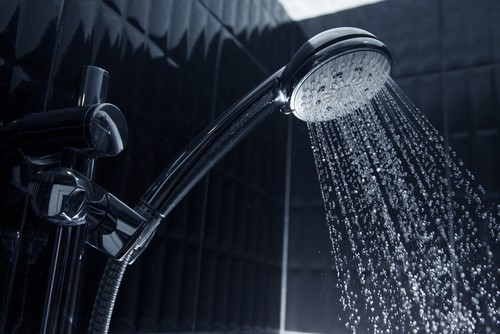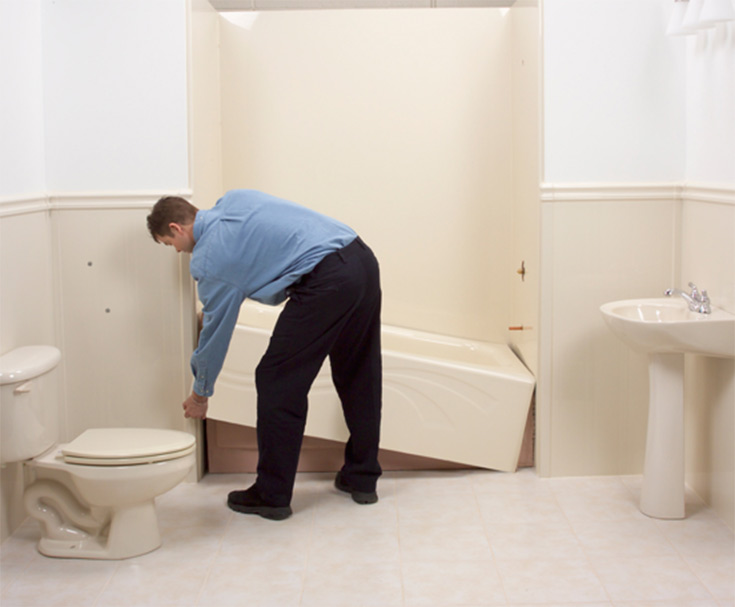5 Solutions to Acrylic Washroom Issues
5 Solutions to Acrylic Washroom Issues
Blog Article
{Visit My Web Page How do you really feel in relation to Finding the Right Plumbing Expert? We recommend that you clean your acrylic bathing product made of Delta ProCrylic or Acrylic with Innovex Technology with non-abrasive soaps and cleaners, such as: When it’s time to clean, always use a terry cloth towel, soft cloth or sponge to avoid scratching the acrylic surface. Don’t use abrasive scrubbing pads, steel wool or sponges, cause permanent damage to the acrylic material. If you use a drain cleaner or clog remover, be sure to rinse thoroughly with water so no product is left standing near the drain. Some chemicals and cleaners may deteriorate acrylic surfaces, causing cracks and, potentially, property damage. To avoid this, don’t use cleaning products that state on their label that they are not suitable for use on Acrylic, ABS, Polystyrene or Plastic. Be sure to check the label of any product before you apply it to the surface; it’s easier to avoid damage than to try to remedy it. Chemicals we do not recommend using to clean acrylic showers/tubs: When you’re ready to apply sealant, a little planning goes a long way. Pick up some painter’s tape and use it to mask off the seam to help make cleaning up easier. When you’re applying the bead, use a constant, steady speed to avoid an uneven finish. Use a caulk tool or a plastic spoon to work the sealant into the joint. Wetting the tool with denatured alcohol will help create a smooth finish. Follow the directions on the back of the tube for cure time. Certain chemicals and cleaners may deteriorate acrylic surfaces, causing cracks and, potentially, property damage. After you’re finished applying it, clean up the product surface and remove any excess sealant with denatured alcohol. Don’t use solvents (turpentine, lacquer thinner, mineral spirits, paint thinner, MEK, xylene, acetone, naphtha, etc.) that can wreak havoc on an acrylic surface. With a little care and consideration, you can prevent damage to your acrylic shower or tub. Keep a supply of soft cloths handy and remove any damaging products or abrasive scrubbing items from the bathroom to ensure they aren’t around when it’s time to clean. https://www.deltafaucet.com/design-innovation/inspiredliving/how-to-clean-acrylic-shower Do you enjoy reading about Hiring a Plumbing Expert? Try to leave feedback directly below. We will be pleased to know your reactions about this content. We hope to see you back again in the future. Are you aware of anybody else who is truly interested in the subject? Feel free to share it. Thank you so much for taking the time to read it.
Polymer bathrooms, shower trays, and also various other acrylic restroom ware have ended up being a lot more typical in washrooms in current times. Not as sturdy and also sophisticated as enamel and also porcelain bathrooms and also components, they are extra affordable as well as offer quite much the same basic objective. Some usual examples of damages to acrylic washroom components include discoloration, splits, openings, etc.Scraped shower or bath surface area
Acrylic washroom fixtures are not abrasion-resistant like enamel varieties. Being an extremely soft material, acrylic scrapes can even be hidden without finishing or dental filling. For these, you must seek expert help for your bathroom repair work.Chain reaction
Sometimes, people try to paint the whole surface of their acrylic bathroom by themselves either since they do not like the shade to conceal acnes. You need to never ever use paint cleaner on acrylic bathrooms. Paint removers do not react with the surface of metal baths, they ruin acrylic bathrooms irreversibly.Bathroom Staining
With extended use of acrylic baths comes staining or discoloration. While some stains can be gotten rid of conveniently, utilizing special chemicals, others call for that the bathroom be resprayed. Aromatherapy oils loosen the dust in some situations thus restoring the bathroom to its former glory.Cracked Polymer Baths
The lifespan of acrylic as well as fiberglass bathrooms is up to 15-20 years for shower frying pans and baths, generally. Cracks in an acrylic shower tray are probably amongst the simplest troubles to repair for a repair work professional. This is the very same for PVC, resin, as well as various other such products.
Polymer baths, shower trays, and other acrylic shower room ware have actually come to be extra common in restrooms in recent times. You must never ever make use of paint remover on acrylic baths. Paint removers do not react with the surface of steel baths, they ruin acrylic bathrooms irreversibly. With prolonged use of acrylic baths comes staining or discoloration. The life-span of acrylic and also fiberglass bathrooms is up to 15-20 years for shower frying pans and baths, generally.How to clean Acrylic shower
USE THESE NON-ABRASIVE CLEANERS
DO NOT USE THESE CLEANERS
Sealant Application Tips

Book Service Now